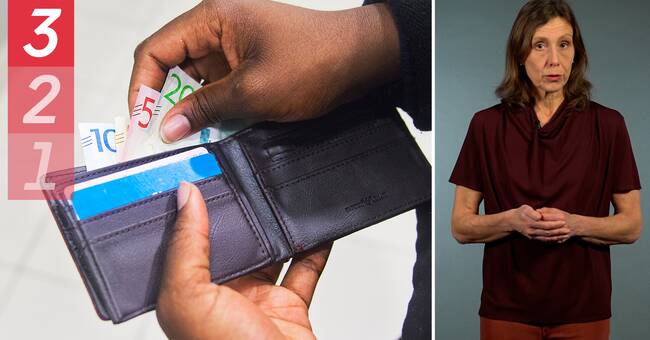This summer, many dared to hope that the worst was over, both in terms of illness and death as well as the economy.
The journey began, the big industrial companies hit the stock market with astonishment with nice profits.
The big cloud of unrest, with which everyone guarded their optimistic forecasts, was called "a second wave".
Then came the second wave.
The death toll rose.
New shutdowns followed.
Many hotels and restaurants are fighting for their lives.
The hospitality industry has lost 50 billion in revenue during the corona year according to the industry association.
50,000 jobs have been lost.
Shops are closing again.
The billions flow out of SAS.
But for the country's economy, it looks comparatively fine.
The fall in GDP in 2020 was only half compared with the financial crisis year 2009 when GDP fell by more than five percent.
And only a third of what, for example, the National Institute of Economic Research feared this spring.
The Riksbank's billions had an effect
It is simply the case that the billions that the government and the Riksbank pumped out as a result of the panic this spring had an effect.
More than anyone could have guessed.
The Riksbank offered SEK 500 billion in corporate loans and is about to buy housing bonds and corporate bonds for SEK 900 billion.
The government spent over 200 billion on crisis support last year, and will continue this year.
It has been the same in other countries.
Factories are up and running, components are being delivered, largely.
So, instead of a financial crisis, it became a stock market party.
Instead of a collapsed housing market, there was a rush to the screenings and rising prices, especially for villas.
And instead of mass redundancies in industry, there were cheap cuts with state aid and without redundancies.
It was quick and easy to pull on fully when demand picked up again.
Large listed companies were able to report record-high profit margins in the financial statements.
Unemployment will not rise to the 11 percent this year that the National Institute of Economic Research and the Swedish Public Employment Service believed in the spring.
Instead, it is expected to end up at nine percent or lower.
In 2019, Sweden had an unemployment rate of 6.8 percent.
"A grim reality behind the numbers"
The vaccine, which did not have much significance for economic development last year, has of course done much to make the outlook from now on brighter.
As early as next year, unemployment will turn down again, according to most forecasters.
But behind the fine numbers also hides a grim reality.
The worst affected industries, such as hotels and restaurants, are so small that it is not so noticeable in Sweden's total GDP, but they give many young people and immigrants their first jobs.
Now it is becoming more difficult to enter the labor market at all.
Long-term unemployment has already risen and is expected to continue to rise.
This year, 200,000 will have been without a job for at least a year, the Debt Office believes.
Still, it is precisely here that the money rain has been felt the least, according to the industry.
Admittedly, a larger proportion of companies receive support than in other industries.
But the money is still not enough, the subsidies are too small and paid out too late, according to the industry.
At the same time, the already solid public finances seem sensationally unshaken through the crisis.
Despite several hundred billion in crisis support, public debt will only have increased from 35 percent of GDP before the pandemic to 38 percent next year, according to the Debt Office's recent forecast.
This is even a lower level than in 2018, when the debt was 38.9 percent.

